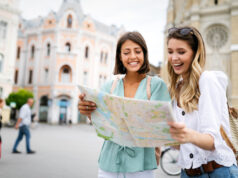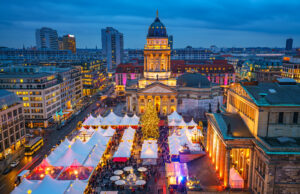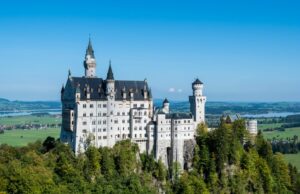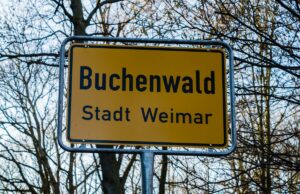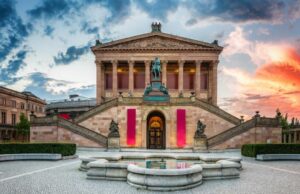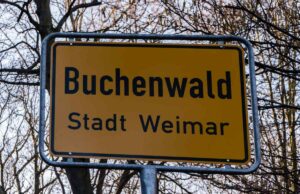
Pittsburg is located in the state of Kansas and has a lot of culture to offer as well as great sights and interesting destinations. So if you’re planning a trip to Pittsburg, you’ve come to the right place!
Here you can find different housings and hotels around Pittsburg
Just type in your destination and get many different suggestions.
Vacation in Pittsburg
Situated in the heart of Pennsylvania’s picturesque Laurel Highlands, Pittsburgh is the state’s second largest city and a renowned vacation destination. Brimming with history and culture, outdoor adventure and worldclass dining, the Steel City has something for everyone.
Downtown Pittsburgh is home to a wealth of iconic attractions, including the Phipps Conservatory and Botanical Gardens, the Andy Warhol Museum, and the Heinz History Center. Sports fans will want to catch a game at PNC Park, while art lovers can explore the Carnegie Museum of Art. Families will enjoy the Children’s Museum of Pittsburgh, and everyone can enjoy a leisurely stroll or bike ride along the Three Rivers Heritage Trail.
Just outside of the city, visitors can discover even more to do. The Laurel Highlands offer ample opportunities for hiking, biking, and horseback riding, as well as whitewater rafting, zip lining, and rock climbing. Those looking for a more relaxed vacation can enjoy golfing, fishing, and bird watching, or simply take in the stunning scenery.
In the winter, skiers and snowboarders can hit the slopes at Seven Springs Mountain Resort, while those seeking a unique experience can go dog sledding or ice climbing. No matter what time of year you visit, Pittsburgh promises an unforgettable vacation.
Sights in Pittsburg
There’s plenty to see and do in Pittsburgh, Pennsylvania, a cosmopolitan city located where the Allegheny and Monongahela Rivers meet to form the majestic Ohio River. The “Steel City” has come a long way since its days as an industrial powerhouse, and today its transformation into a center for the arts, sciences, and education is nearly complete. The Riverfronts Project, a multimilliondollar initiative, has reconnected Pittsburghers with their three rivers, and the city’s 90 neighborhoods offer visitors a wide range of dining, shopping, and nightlife options.
Downtown is the city’s center, home to cultural attractions, businesses, and nightlife. The Golden Triangle, formed by the confluence of the Allegheny and Monongahela Rivers, is the business district, where you’ll find the corporate headquarters of PNC Bank, U.S. Steel, and PPG Industries, as well as the U.S. Steel Tower, the tallest building in Pennsylvania.The triangular shape of the area is due to the convergence of the Allegheny from the northeast and the Monongahela from the southeast, which together form the Ohio River.To the east of the Golden Triangle is the Strip District, a historic neighborhood that was once the city’s wholesale food district.
The Strip is now home to trendy shops, restaurants, nightclubs, and art galleries, as well as the Heinz History Center, which tells the story of the ketchup company and its founder, Henry J. Heinz. Just south of the Strip is the vibrant South Side, another neighborhood that has undergone a revitalization in recent years. The South Side is home to hip bars and restaurants, as well as the Carnegie Science Center, which has four floors of handson exhibits, an Omnimax theater, and a planetarium.
On the North Side, you’ll find Allegheny General Hospital, as well as the Andy Warhol Museum, which is dedicated to the life and work of the famed pop artist. The museum houses the largest collection of Warhol’s art, and it’s located in the neighborhood where he grew up. The North Side is also home to PNC Park, where the Pittsburgh Pirates play baseball.
If you’re looking for a scenic spot to relax, take a stroll through one of Pittsburgh’s many green spaces, such as Point State Park, Frick Park, or Schenley Park. You can also ride the Duquesne Incline, an inclined railway that takes passengers to the top of Mt. Washington for sweeping views of the city. Or, for a bird’seye view of Pittsburgh, head to the observation deck of the Gateway Clipper Fleet, a fleet of riverboats that offer cruises on the three rivers.
History of Pittsburg
Pittsburgh is a city located in the Commonwealth of Pennsylvania in the United States, and is the county seat of Allegheny County. Pittsburgh is located in the westcentral portion of the state, at the confluence of the Allegheny River and the Monongahela River, which forms the Ohio River. The city’s population is 301,048 residents, making it the 66thlargest city in the U.S. and the secondlargest city in Pennsylvania behind Philadelphia. The metropolitan population of 2,324,743 is the largest in both the Ohio Valley and Appalachia, the secondlargest in Pennsylvania (behind Philadelphia), and the 26thlargest in the U.S.
Pittsburgh is known both as “the Steel City” for its more than 300 steelrelated businesses and as the “City of Bridges” for its 446 bridges. The city features 30 skyscrapers, two inclined railways, a prerevolutionary fortification and the Point State Park at the confluence of the rivers. The city developed as a vital link of the Atlantic coast and Midwest, as the mineralrich Allegheny Mountains made the area coveted by the French and British empires, Virginians, Wessex men, and Iroquois.
The area became a battleground when France and Britain fought for control in the 1750s. After the capture of Fort Duquesne by the British, the site became one of the North American frontiers during the Seven Years’ War and was the site of major battles. British General Edward Braddock was dispatched with Major George Washington as his aide to take Fort Duquesne, which was then held by the French. The British and colonial force were defeated at Braddock’s Field. General John Forbes finally took the fort in 1758. Forbes began construction on Fort Pitt, named after William Pitt the Elder while the settlement was named “Pittsborough”.
During Pontiac’s Rebellion, native tribes gathered in Pittsburgh as they planned an assault on Fort Pitt. The fort was successfully defended by Colonel Henry Bouquet.
Bouquet’s victory helped end hostilities between white settlers and Native Americans south of the Ohio River. By 1759, the colony of Virginia included the area that would become Western Pennsylvania. Both the settlement and the fort were located in the area of what is now known as Point State Park. Pittsburgh became a possession of Pennsylvania in 1763. The following year, the inhabitants of Pittsburgh and Allegheny County voted to accept the government of Pittsburg.
In 1769, Pittsburgh’s first newspaper, The Pittsburgh Gazette, began publication. On March 18, 1771, Pittsburgh was created a borough, and on October 22, 1773, it achieved city status. Theomic changes in 1786 increased its size. The population in 1790 was 1,400.
During the Whiskey Rebellion in 1794, a group of farmers led by David Bradford challenged Federal authority in Western Pennsylvania. The rebels were quickly put down by Federal troops led by General Wayne.
In 1800, the city’s population reached 2,000. Pittsburgh prospered in the early 1800s and its population reached 9,000 by 1830. The city contained nearly 40 percent of the nation’s iron production and was also a major center of coal mining. Steel production began in Pittsburgh in 1875. The city’s growth continued through the late 19th century and reached a population of698,603 by 1900. Ethnically, Germans composed the largest group of new immigrants, followed by the Irish. Most of the city’s growth occurred in the “Golden Triangle” bounded by the Allegheny and Monongahela rivers and the Ohio River. Pittsburgh annexed Allegheny City in 1907, which nearly doubled the city’s size. Theresentday downtown area includes the “Golden Triangle” and much of Allegheny City’s former territory.
The Great Depression and the decline of the steel industry in the 1970s and 1980s brought hard times to the city. The population fell to a low of 368,033 in 1990. The city has since regained much of its stature, and its population has rebounded to over 300,000. The city is now home to a growing number of hightech companies, and Pittsburghers enjoy a renewed sense of pride in their city.
Other vacation destinations in the United States:


